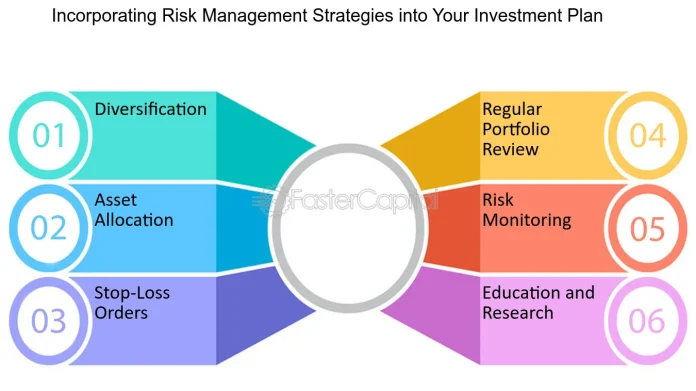Transforming Investment Strategies and Risk Management
Generative AI for finance is revolutionizing how investment strategies are formulated, offering enhanced analytical capabilities that were once considered the domain of science fiction. By leveraging vast datasets, generative AI models can identify patterns and trends that elude conventional analytical tools. This enables financial analysts and investors to make more informed decisions, ultimately leading to potentially higher returns on investment. The technology’s ability to process and analyze real-time data means that strategies can be continuously optimized, creating opportunities for dynamic portfolio adjustments.
Moreover, the advent of generative AI in finance has given rise to innovative investment products and strategies. Traditional methods relied heavily on historical data and human intuition, which can sometimes be subjective or biased. In contrast, generative AI models, such as neural networks and reinforcement learning, can simulate a multitude of scenarios, providing investors with a more robust understanding of potential outcomes. This capability is particularly beneficial in volatile markets, where rapid changes can have significant impacts on investment performance.
The integration of generative AI into investment strategies also facilitates a more personalized approach to asset management. By analyzing investor behavior and preferences, AI systems can tailor strategies that align with individual goals and risk appetites. This personalization enhances client satisfaction and engagement, as investors receive strategies tailored to their unique needs. As a result, financial institutions adopting generative AI can gain a competitive edge, attracting more clients and managing larger asset portfolios.
Enhancing Risk Management with Generative AI
Risk management is a critical component of financial operations, and generative AI for finance is transforming how risks are identified, assessed, and mitigated. The ability of AI systems to analyze vast amounts of unstructured data, including news articles, social media posts, and financial reports, allows for the detection of emerging risks that might not be evident through traditional methods. This proactive approach enables financial institutions to address potential threats before they materialize into significant issues.
Generative AI models also excel in stress testing and scenario analysis, which are fundamental to robust risk management. By simulating various market conditions and potential disruptions, AI can provide insights into the resilience of financial portfolios and institutions. This predictive capability is crucial for developing contingency plans and ensuring that organizations are prepared for adverse events. Additionally, AI-driven risk management tools can continuously learn and adapt, refining their models based on new data and insights, which enhances their accuracy and reliability over time.
Furthermore, generative AI contributes to improved regulatory compliance and reporting. Financial institutions are subject to stringent regulatory requirements, which often involve extensive documentation and reporting. AI can automate these processes, ensuring that compliance is maintained with minimal manual intervention. This not only reduces the risk of human error but also allows compliance teams to focus on more strategic tasks. By streamlining compliance efforts, generative AI helps organizations avoid costly penalties and maintain their reputations.
Key Benefits of Implementing Generative AI in Finance
The implementation of generative AI for finance offers numerous benefits that extend beyond investment strategies and risk management. One significant advantage is operational efficiency. AI-powered systems can automate routine tasks, such as data entry and reconciliation, freeing up human resources for more complex and value-added activities. This increased efficiency can lead to cost savings and improved productivity, allowing financial institutions to allocate resources more effectively.
Another key benefit is enhanced decision-making capabilities. With access to real-time data and advanced analytics, financial professionals can make more informed decisions quickly and confidently. Generative AI systems provide insights that are not only more accurate but also more nuanced, considering a broader range of variables and scenarios. This depth of analysis empowers financial institutions to capitalize on opportunities and mitigate risks more effectively, ultimately leading to better financial outcomes.
Generative AI also fosters innovation within the financial sector. By enabling the development of new products and services, AI can help organizations meet the evolving needs of their clients. For example, AI-driven robo-advisors offer personalized investment advice at a fraction of the cost of traditional financial advisors, making financial planning more accessible to a wider audience. Furthermore, the continuous evolution of AI technology means that financial institutions can stay at the forefront of industry trends, maintaining their competitive advantage in a rapidly changing landscape.
The Future of Finance with Generative AI
The transformative potential of generative AI for finance is undeniable, as it reshapes investment strategies, enhances risk management, and delivers numerous operational benefits. As financial institutions continue to integrate AI into their operations, they can expect to see significant improvements in efficiency, decision-making, and client satisfaction. The ability of generative AI to analyze vast amounts of data and provide actionable insights is a game-changer for the finance industry, paving the way for more innovative and personalized financial services.
Looking ahead, the future of finance with generative AI will likely involve even greater collaboration between humans and machines. As AI systems become more sophisticated, they will complement human expertise, offering new perspectives and enhancing the decision-making process. This symbiotic relationship will enable financial professionals to focus on strategic initiatives, driving growth and innovation within their organizations.
In conclusion, the adoption of generative AI in finance is not merely a trend but a fundamental shift in how financial services are delivered. Financial institutions that embrace this technology will be well-positioned to thrive in an increasingly competitive and complex market. As AI continues to evolve, it will undoubtedly play a pivotal role in shaping the future of finance, creating new opportunities for growth and transformation.










